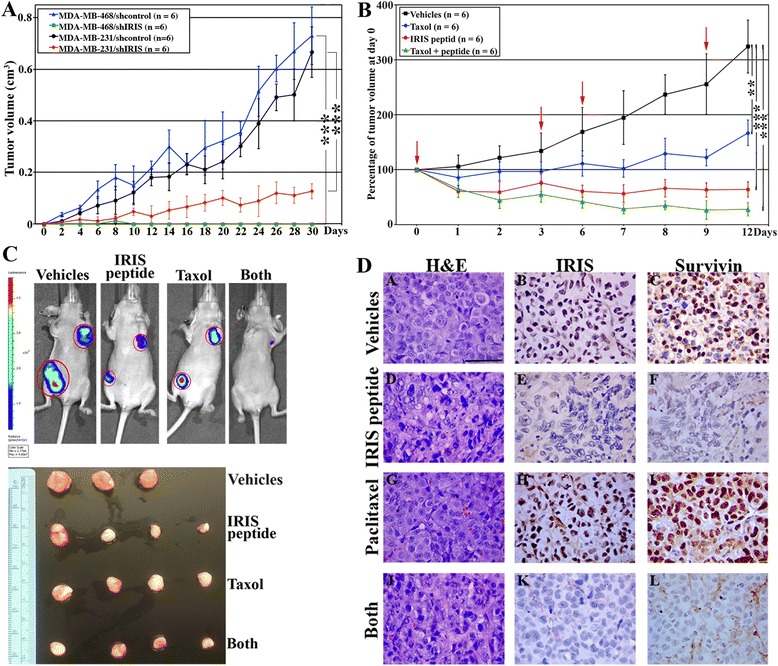Figure 7.

BRCA1-IRIS overexpression promotes TNBC formation and maintenance, while inactivation sensitizes them to low paclitaxel concentrations. (A) Volumes of tumors developed in SCID mice using MDA-MB-231/shcontrol (black line, n = 6), MDA-MB-231/shIRIS (red line, n = 6), MDA-MB-468/shcontrol (blue line, n = 6) or MDA-MB-468/shIRIS (green line, n = 6). (B) The effect of vehicle (black line, n = 6), paclitaxel (10 mg/kg, delivered i.p., blue line, n = 6), IRIS peptide (10 mg/kg, delivered i.t., red line, n = 6), or both (at half the concentrations, delivered through the same routes, green line, n = 6) on an established MDA-MB-468 tumors. Red arrows show the times of the drug administration. ** = P ≤0.001 and *** = P ≤0.0001. (C) Shows representative images of treated mice as described in (B) at day 12 (upper) or representative images of tumors isolated from these mice following the treatments also at day 12 (lower). (D) Representative images of the sections from tumors shown in (B and C) stained with H&E (left), BRCA1-IRIS (middle), survivin (right) antibodies. Scale bar is D = 100 μm. H&E, hematoxylin and eosin; i.p., intraperitoneally; i.t., intratumorally; TNBC, triple negative breast cancer.
